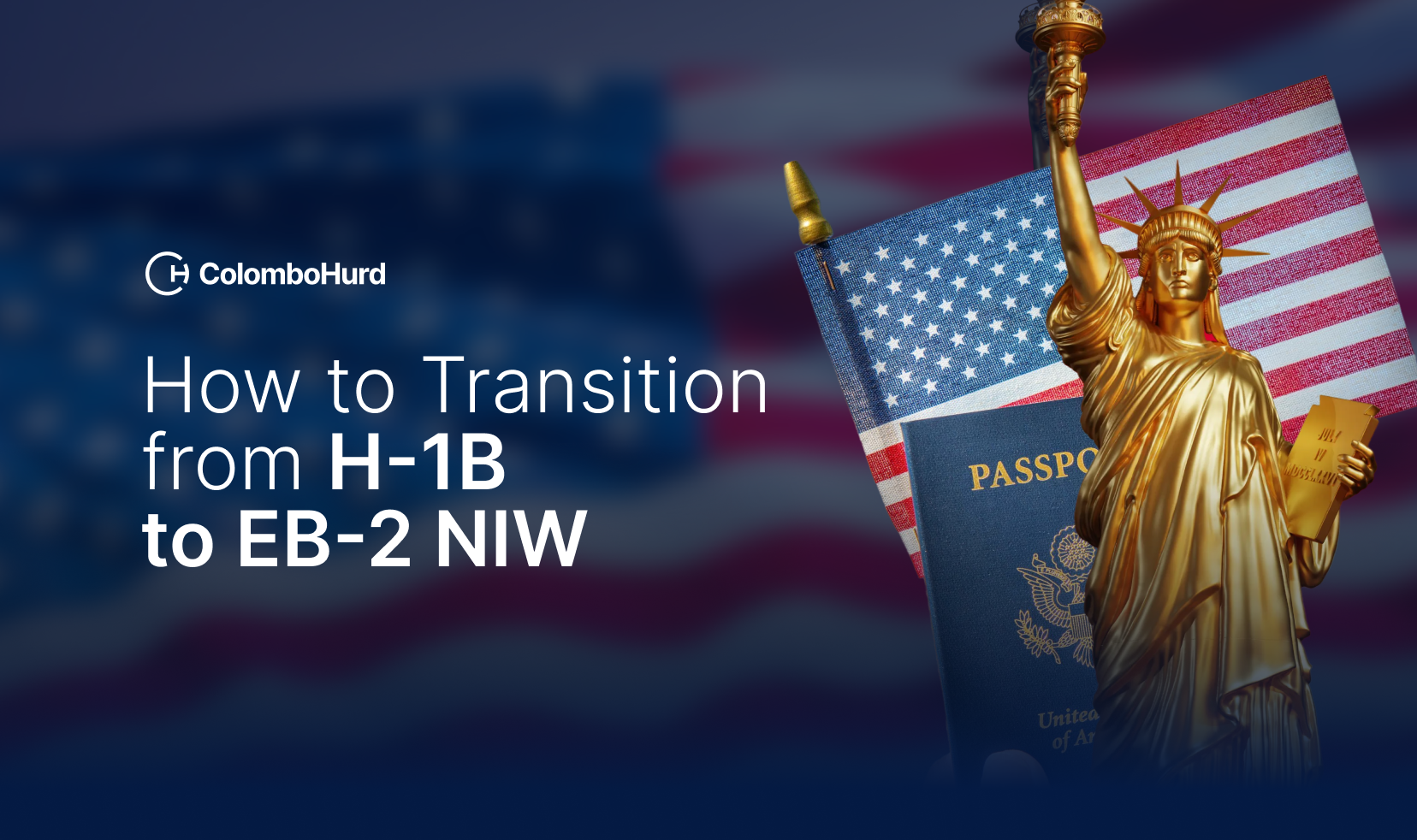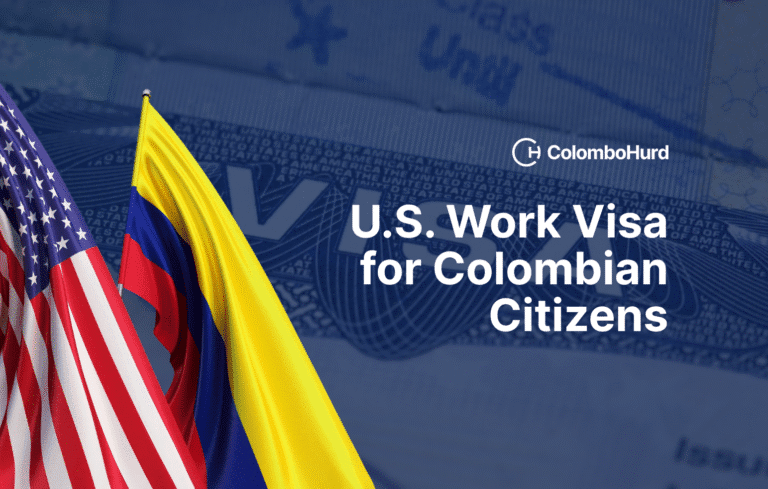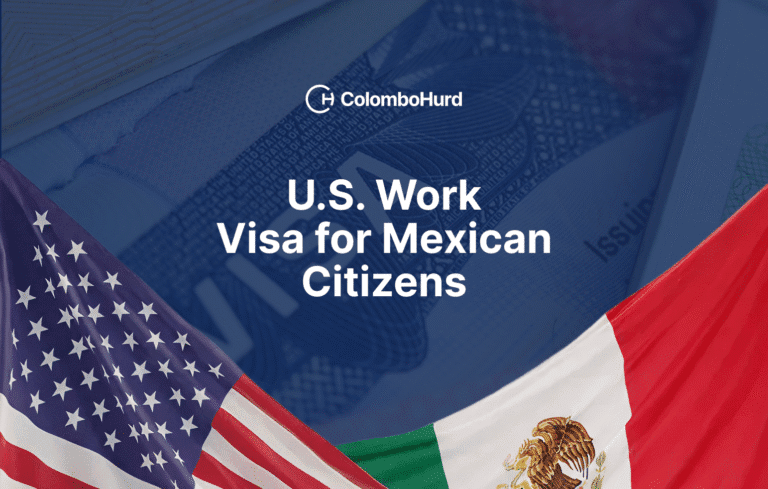
On This Page
transition from H-1B to EB-2 NIW
For many professionals working in the United States on H-1B status, the most pressing question is how to move toward a green card in a way that is more stable, predictable, and under their control. A traditional PERM-based green card often means waiting close to two years just to reach the I-140 stage. During that time, you must first obtain a prevailing wage determination and then complete recruitment and labor certification, while your future depends entirely on your employer’s business decisions. In a climate where large companies regularly announce sizable layoffs or restructuring, an H-1B worker in the middle of PERM can suddenly lose both their job and their place in the green card process.
The EB-2 National Interest Waiver (NIW) offers a way forward. It allows certain H-1B professionals to self-petition for a green card by demonstrating that their work has value to the United States. Instead of waiting years for employer-controlled steps, you can start establishing your place in line for a green card now and gain more independence from any single employer.
In this guide, we’ll explain what the EB-2 NIW is, why it has become an increasingly attractive option for H-1B professionals, what USCIS looks for under the Matter of Dhanasar framework, and how to navigate the transition step by step.
What Is the EB-2 National Interest Waiver (NIW)?
The EB-2 National Interest Waiver is a pathway within the EB-2 visa category that removes two major requirements of the traditional process: the PERM labor certification and the need for employer sponsorship. Instead of relying on an employer to lead the case, a qualified petitioner may file their own I-140 petition and demonstrate that their work benefits the United States in a way that justifies waiving the PERM process.
The U.S. Citizenship and Immigration Services (USCIS) evaluates EB-2 NIW cases under the Matter of Dhanasar framework, which considers three questions: whether your proposed work has substantial merit and national importance, whether you are well positioned to advance that work, and whether it would benefit the United States to waive the usual job-offer and PERM requirements. These three prongs form the foundation of every EB-2 NIW case.
Why H-1B Visa Holders Consider the EB-2 NIW Path?
For many H-1B professionals, the interest in the EB-2 NIW begins with a desire for more stability and control over their long-term immigration plan. Even in strong companies, the PERM process can be delayed by shifting priorities, budget constraints, or internal restructuring, leaving employees uncertain about when their green card process will truly begin. As careers evolve and opportunities arise, tying your future entirely to an employer-controlled process can feel limiting.
More Control Through Self-Petitioning
The EB-2 NIW offers a more flexible alternative. Because it allows you to self-petition, you do not have to wait for employer sponsorship or rely on the timing of a PERM case , which in practice often takes close to two years before you can even reach the I-140 stage. An approved EB-2 NIW I-140 can support H-1B extensions beyond the six-year limit and may allow an H-4 spouse to apply for work authorization, giving families greater stability. In other words, instead of waiting for a long PERM sequence that can be interrupted by circumstances beyond your control, you can begin building your own I-140 foundation now. Importantly, pursuing an EB-2 NIW fits cleanly within the H-1B framework because H-1B is a dual-intent visa; you can pursue permanent residency without jeopardizing your ability to work or travel.
Responding to Changes in the H-1B Landscape
Recent developments in the H-1B landscape have also pushed more professionals to explore alternatives like the EB-2 NIW. Proposed regulatory changes, such as increased filing fees and potential adjustments to how the H-1B program operates, have created additional uncertainty about long-term reliance on H-1B alone. For many, the EB-2 NIW has become a proactive way to secure a more predictable path forward, independent of future policy shifts or employer decisions. If you would like to see how the EB-2 NIW fits alongside other strategies, review our article on H-1B alternatives for a broader overview of the options available.
EB-2 NIW Eligibility Requirements for H-1B Professionals
For H-1B professionals, EB-2 NIW eligibility usually starts by confirming that you qualify for the EB-2 category itself. In most cases, this means holding an advanced degree, a bachelor’s degree plus at least five years of progressive post-graduate experience or demonstrating exceptional ability in your field. Because many H-1B roles already require specialized degrees and technical expertise, this threshold is often met more easily than people expect.
Once the EB-2 foundation is in place, the real focus shifts to how your background fits within the National Interest Waiver standard under Matter of Dhanasar. At this stage, the question becomes how your real-world work, achievements, and plans align with the three NIW prongs, not in theory, but in practice. This means looking closely at the projects you support for U.S. employers or clients, the systems or products you help improve, and the broader impact your work has on U.S. industries and communities.
In an eligibility review, we map your career story onto the EB-2 NIW framework, assessing where your work demonstrates substantial merit and national importance, where your track record shows you are well positioned to advance your proposed endeavor, and where the United States benefits from waiving the usual PERM and job-offer requirements.
The goal is to recognize and clearly document how your existing H-1B experience already aligns with the NIW standard.
Required Evidence for a Strong H-1B to EB-2 NIW Petition
A strong H-1B to EB-2 NIW petition is less about having a long list of documents and more about presenting the right evidence in a clear, organized way. At a basic level, every case will include proof of your identity, immigration history, education, and current H-1B status, along with a well-drafted proposed endeavor statement that explains what you plan to do in the United States and why it matters.
From there, the focus shifts to demonstrating your impact. For most H-1B professionals, this means documenting the projects, products, or services you have worked on for U.S. employers or clients and explaining how those efforts have created measurable improvements or value. Detailed letters from supervisors, colleagues, clients, or industry experts are often central to an EB-2 NIW petition. The most effective letters do more than praise your work; they describe specific contributions, explain why you were chosen for key responsibilities, and connect your role to broader U.S. interests.
Additional evidence can include internal awards, performance reviews, speaking invitations, participation in professional organizations, patents, or publications, where available. However, EB-2 NIW approval does not depend on having an academic profile. Many successful petitions are built on employment-based achievements, backed by strong, specific recommendation letters and concrete proof of how your work benefits the United States.
Step-by-Step Guide: Transitioning from H-1B to EB-2 NIW
While every EB-2 NIW case is unique, these steps explain the process and how we support you at each stage.
1. Determine Your EB-2 and NIW Eligibility
We begin with a focused eligibility review based on your education, experience, and immigration history. Our team evaluates your degree, work record, and H-1B timeline to see how your current role fits the NIW standard. This lets us identify your strongest arguments and outline the best strategy for your case. See if you qualify.
2. Define Your Proposed Endeavor
Next, we work with you to define a clear, forward-looking plan for what you will contribute to the United States and why it matters. This plan is grounded in your real career path, not a fictional story. Our role is to turn your day-to-day work and long-term goals into a proposed endeavor that aligns with U.S. priorities and makes sense to USCIS.
3. Gather Evidence and Prepare the EB-2 NIW Filing
At this stage, your case starts to take shape. You provide documentation of your key projects, achievements, and responsibilities, and we handle the rest. Our team organizes your evidence, drafts and refines your recommendation letters, and prepares the legal brief that connects your background and proposed endeavor to each of the Dhanasar NIW requirements.
4. File Form I-140 as the EB-2 NIW Petition
Once your case is fully prepared, we file the I-140 NIW petition with USCIS. For H-1B professionals with limited time left, we may evaluate premium processing for a faster decision. Our team assembles and submits the full filing, tracks your case, and responds to any RFEs if they arise.
5. File Form I-485 (Adjustment of Status) When Eligible
Your ability to file the I-485 depends on the Visa Bulletin for your category and country of chargeability. When your priority date becomes current, or if you qualify for concurrent filing, we prepare the full I-485 package. We guide you on timing, assemble all required forms and evidence, and help you move toward permanent residency as soon as the law allows.
To understand how long each of these stages typically takes, you can review our detailed timeline guide here.
Common Misconceptions About the EB-2 NIW for H-1B Professionals
When H-1B professionals first look into the EB-2 National Interest Waiver, the same misunderstandings tend to surface. Here are a few of the most common ones I see in practice:
Misconception: EB-2 NIW is only for academics with lots of publications
Reality: This is not true. While publications and citations can strengthen a case, many successful EB-2 NIW petitions are submitted by industry professionals in engineering, software, data science, healthcare, finance, and other applied fields. Projects you have led, systems you have improved, products you have helped build, and solutions you have delivered for U.S. employers can all be powerful evidence of impact when appropriately documented.
Misconception: My current private-sector H-1B job doesn’t really count for EB-2 NIW
Reality: Your current H-1B employment can be one of your most significant assets. The work you do for U.S. companies, clients, or users already shows how your skills are being used in the United States. Detailed letters from supervisors and colleagues, internal performance records, and project documentation can help demonstrate that your role advances essential U.S. interests in a concrete, day-to-day way.
Misconception: I can’t pursue PERM and EB-2 NIW simultaneously.
Reality: It is possible to have an employer-sponsored PERM case and a self-petitioned NIW moving in parallel. For some H-1B professionals, the NIW becomes a way to add an extra layer of security while a PERM process is pending, delayed, or uncertain.
Misconception: Filing an EB-2 NIW will hurt my H-1B because H-1B is only temporary.
Reality: H-1B is a dual-intent visa. That means you are allowed to pursue permanent residency, file an Eb-2 NIW, and even hold an approved I-140 without giving up or jeopardizing your H-1B status. This dual-intent structure is one reason the EB-2 NIW is a strong long-term strategy for many H-1B workers.
Misconception: Once my EB-2 NIW I-140 is approved, I don’t need to worry about my status anymore.
Reality: An approved NIW I-140 is a significant milestone, but it does not give you lawful status by itself. Until your adjustment of status petition (Form I-485) is filed and ultimately approved, you must continue to maintain a valid underlying status such as H-1B or move into another lawful category. Filing or approval of an I-140 alone does not grant, extend, or restore lawful status; it must be paired with a properly filed I-485 or consular processing to result in a green card. As your attorneys for the green card process, we focus on building and defending your EB-2 NIW and adjustment petitions. At the same time, you and your H-1B employer (or their counsel) remain responsible for keeping your underlying H-1B or other nonimmigrant status in good standing.
Frequently Asked Questions About the EB-2 NIW for H-1B Professionals
Yes. Nearly all EB-2 NIW petitioners continue working full time during the process. Your ongoing work in the United States actually strengthens your case because your current projects and responsibilities help demonstrate real-world impact. You must, however, continue to comply with all H-1B requirements, including working in the approved position for your H-1B employer and following any change-of-employer or amendment rules that apply.
No. While they can help, they are not required. Many strong EB-2 NIW cases are based on employment achievements, solutions you’ve delivered, systems you’ve improved, technologies you’ve developed, or leadership roles you’ve earned.
Timelines vary depending on preparation, premium processing, and visa bulletin movement. For a detailed breakdown of each stage and current trends, you can review our guide here.
Yes. An approved I-140 (whether NIW or PERM) can support H-1B extensions beyond the six-year limit as long as all legal requirements are met. This is one of the most practical benefits for H-1B professionals.
Any change of employer must be completed in full compliance with H-1B rules so that you continue to maintain valid status. Our focus in the EB-2NIW case is your long-term green card strategy and the consistency of your proposed endeavor, while you and your H-1B employer and their counsel remain responsible for maintaining or extending H-1B status.
Often, yes. Many clients use the EB-2 NIW as part of a multi-stage plan that may include founding or joining a startup. The key is coordinating timing and ensuring you remain in valid status until your adjustment of status is filed.
Conclusion
If you are already in the United States on an H-1B, working for a U.S. employer and building your career here, you are in a uniquely strong position to start an EB-2 NIW case. You have what many petitioners outside the country do not: lawful presence, active U.S. work, and a professional network that can help demonstrate your value to the United States. This foundation also allows you to pursue a green card path that is not dependent on your employer’s PERM timeline.
At the same time, significant changes to the H-1B program and related procedures are being discussed for the coming years. Future rules may make H-1B extensions, employer changes, or even EB-2 NIW filings more difficult. The practical takeaway is simple: take advantage of the system as it exists today, while you are here and fully engaged in the U.S. market. Consider whether an EB-2 NIW can give you more control, stability, and independence over your long-term immigration strategy.




